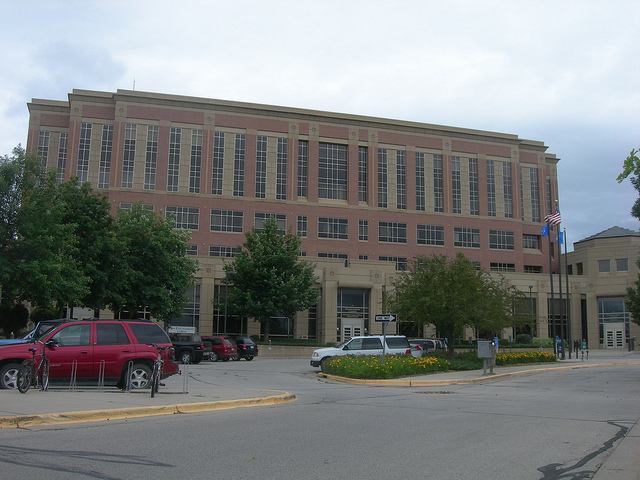Since the founding of our communities, organizations, businesses and citizens have stepped forward to build and serve their community. Click on any of the logos below to learn about those who made this website possible! If you would like to learn about becoming a sponsor CLICK HERE!

- Counties: Fillmore County, MN and Olmsted County, MN
- Region: Southern MN
- Sponsors
- About Chatfield, MN
- Businesses
- Community Organizations
- Faith Organizations
- Festivals and Events
- Points of Interest
- Veterans
- Visit Website
Learn how to Contribute to any of the above categories.
No news yet. Got some news? Hit that NEW POST button!
About Chatfield, MN
Chatfield is a city in Fillmore and Olmsted counties in Minnesota. The city's area is split almost equally between the two counties. Chatfield is known as "The Gateway to Bluff Country" and "The Chosen Valley".
The land on which Chatfield sits was claimed by Thomas Twiford in 1853. Twiford paid a grand total of $195.60 for the town site. The town was named in honor of Judge Andrew G. Chatfield. It was the original Fillmore County seat.
In 1856 the Federal Land office was moved here, where it remained for several years. 1856 also marked the year that West Chatfield was laid out across the Root River. The first homes of the settlers were undoubtedly log cabins, with frame houses soon following. Most of the brick buildings on Main Street were built between 1870 and 1900. These buildings were mostly constructed of Chatfield brick and are a beautiful and historical addition to our community.
George A. Haven constructed the wall along side Old Territorial Road from 1927 to 1964. It includes stones from the early schoolhouse, stones from six continents, including exotic places like Antarctica, England, Hong Kong, Tasmania and most of the fifty states. It also includes the thighbone of a dinosaur from Montana and a baptismal font from the ruins of a church in Italy.
Some of the first enterprises included a sawmill, a brickyard, flour mills, a woolen mill, an iron foundry, a door sash and blind factory, a broom factory and a cheese factory. A major hotel called the Medary House was built in town and, during its time, it was considered one of the best hotels in the country. The town originally had two newspapers, The Chatfield Democrat and The Chatfield Republican. These newspapers merged in 1860 and, eventually evolved into The Chatfield News, which still prints today.
Soon after it was founded, the citizens of Chatfield created a militia group called The Chatfield Guards. They could often be seen drilling in the City Park. When the Civil War broke out and President Lincoln issued his call for troops the militia members immediately volunteered. They became Company A of the 2nd Minnesota Regiment. General Judson Wade Bishop was a Chatfield resident who served prominently in the war.
Businesses of Chatfield, MN
The businesses of our towns are truly the lifeblood of each community, click on any businesses below to learn about them, to learn how to add your business to your town and county page CLICK HERE!
Community Organizations of Chatfield, MN
Small towns and rural communities throughout the Midwest are looking for ways to strengthen their economies, provide better quality of life, and build on local assets. Here you will find the organizations that stabilize, preserve, and revitalize the small towns and rural areas alike. To submit your organization to be included on your town and county page CLICK HERE!
Events of Chatfield, MN
The small towns of the Midwest have long shared pride in their communities through festivals and events! Citizens from each community, working together, continue to offer entertainment options that not only appeal to their citizens, but visitors to their community! Below you will find festivals and events you are sure to want to attend! If you would like to have (DST) include an annual festival or event on your town and county page CLICK HERE!
Faith Organizations of Chatfield, MN
Throughout the years faith organizations have not only been an essential part of a town's religious life, but its community life. Below you will find stories about these organizations, If you would like to induct a faith organization to be added to your town and county page CLICK HERE!
Points of Interest of Chatfield, MN
The communities of the Midwest have a lifestyle unique to their region — rich in history and points of interest like no other! Below you will find points of interest you are sure to want to visit! To nominate a landmark, historic location, museum, etc. as a point of interest on your county and region page CLICK HERE!
Fillmore County, MN
Visit our county page and you will find information about our town and county's points of interest, festivals/events and faith community. You also will learn about the community organizations that have built and continue to build strong communities (chambers, community groups, and departments, etc) and much more when you visit the Fillmore County, MN page.
Olmsted County, MN
Visit our county page and you will find information about our town and county's points of interest, festivals/events and faith community. You also will learn about the community organizations that have built and continue to build strong communities (chambers, community groups, and departments, etc) and much more when you visit the Olmsted County, MN page.
Veterans of Fillmore County, MN and Olmsted County, MN
Veterans come from many walks of life and whether a veteran has severed two decades ago or two days ago, they have made our freedoms possible. Below you will find stories about many who have served. If you would like to nominate a veteran to be included on your town and county page CLICK HERE!




































